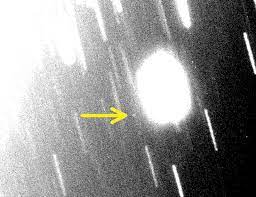In a remarkable astronomical feat, astronomers utilizing the Subaru Telescope and other world-leading observatories have unearthed three previously undiscovered moons orbiting the outermost planets of our solar system—Uranus and Neptune. Among these newly discovered celestial companions is a moon around Neptune, dubbed S/2021 N1, which stands as the faintest moon ever detected by ground-based telescopes, marking a significant milestone in our exploration of the outer reaches of our cosmic neighborhood.
Led by Scott Sheppard from the Carnegie Institution for Science, the team of astronomers leveraged the advanced capabilities of the Subaru Telescope and other state-of-the-art observatories to make these groundbreaking discoveries. The newfound moon around Uranus, known as S/2023 U1, bolsters the tally of known moons orbiting the ice giant to 28, representing a crucial addition to our understanding of Uranus’ complex lunar system.
With a diminutive diameter of merely 8 kilometers, S/2023 U1 is believed to be the smallest among Uranus’ moons, completing one orbit around the planet in approximately 680 days. Its detection underscores the remarkable precision and sensitivity of modern astronomical instruments in probing the depths of our solar system.
Meanwhile, Neptune, the enigmatic ice giant, unveiled two new moons through the diligent observations of the research team. S/2002 N5, the brighter of the pair, boasts a diameter of approximately 23 kilometers and orbits the distant planet over a span of nearly 9 years. Its discovery, traced back to an object observed in 2002, highlights the meticulous archival analysis that underpins modern astronomical research.
However, the true star of the discovery is S/2021 N1, a minuscule moon measuring around 14 kilometers in diameter with an orbital period of almost 27 years. Initially spotted by the Subaru Telescope in 2021, its detection posed a formidable challenge due to its extreme faintness, requiring special observing time at the Very Large Telescope in Chile and the Gemini Telescope in Hawai’i to confirm its orbit around Neptune.
These findings not only expand our knowledge of Uranus’ and Neptune’s lunar populations but also shed light on the dynamic processes that shaped the early solar system. The distant, eccentric, and inclined orbits of these newly discovered moons suggest they were captured by the gravitational pull of Uranus and Neptune during the planets’ formative years, amid the chaotic dance of celestial bodies in the primordial solar system.
Moreover, the presence of dynamical orbital groupings among these outer moons hints at a turbulent past marked by collisions and disruptions, offering invaluable insights into the tumultuous early history of our cosmic neighborhood. Sheppard, who continues to explore the outer edges of our solar system in search of Planet X, anticipates that unraveling the mysteries of these outer moons will unveil new clues about the formation and evolution of our celestial surroundings.
As our understanding of the cosmos continues to evolve, discoveries such as these underscore the critical role of advanced telescopes like the Subaru Telescope in unraveling the secrets of the universe and expanding the boundaries of human knowledge.
